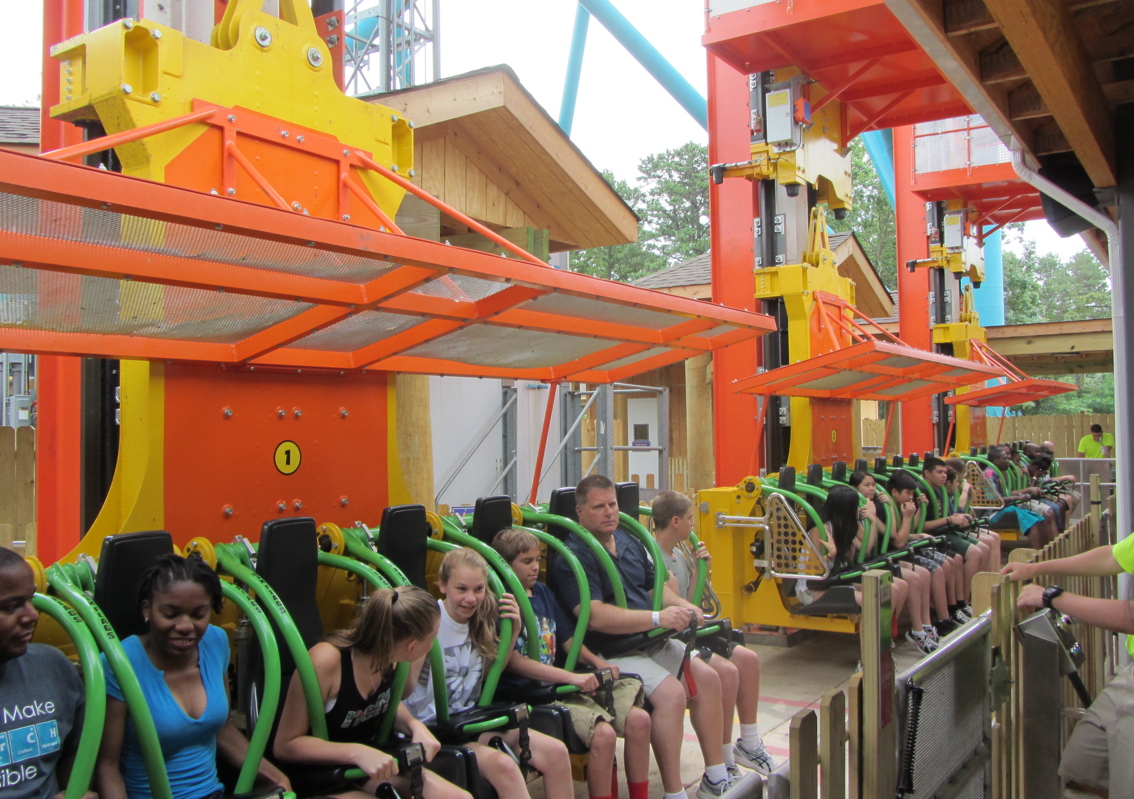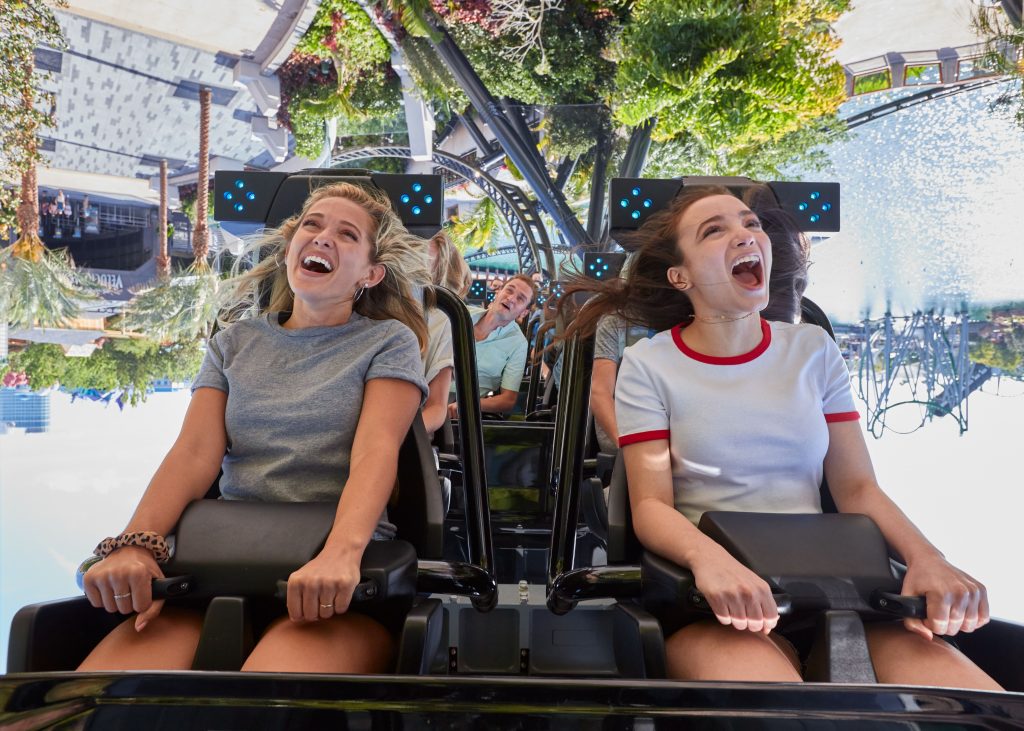You are using an out of date browser. It may not display this or other websites correctly.
You should upgrade or use an alternative browser.
You should upgrade or use an alternative browser.
14 year old killed after being thrown from “drop tower” ride
- Thread starter Max.
- Start date
More options
Who Replied?These cell phones are turning us into soulless demons. Nobody trying to help?
Look at the man behind where the kid landed. Takes out his phone and starts recording the dead body smh
R.I.P. to the kid
No way I'm getting on any rides these days
No way I'm getting on any rides these days

Horrible
Actually6Foot3
Veteran
You suppose to check every person and push down on their locking mechanism YOURSELF. why tf you asking the ri3rs if they did it?
I say this as someone who works riders as a teen. This is bananas and was 100% avoidable. The crew member was fukking lazy.
Also this is designed poorly and should have the seatbelt clip as backip should the locking mechanism fail for any reason.
I say this as someone who works riders as a teen. This is bananas and was 100% avoidable. The crew member was fukking lazy.
Also this is designed poorly and should have the seatbelt clip as backip should the locking mechanism fail for any reason.
Poetical Poltergeist
Precise and cold hearted
Crazy. Rip to that kid. Horrible.
everything here is facts. and in most rides like that there should be a hump between the legs to prevent people from just sliding out the bottom like that.You suppose to check every person and push down on their locking mechanism YOURSELF. why tf you asking the ri3rs if they did it?
I say this as someone who works riders as a teen. This is bananas and was 100% avoidable. The crew member was fukking lazy.
Also this is designed poorly and should have the seatbelt clip as backip should the locking mechanism fail for any reason.
Jaylen Tatum
Superstar
I almost fell out a ride at the the fair when I was younger too. The person sitting next to me was laughing at me because I was tucked under the the seat. He thought I was just scared of the ride. My seat belt was loose and every time we got upside down I could feel myself slipping out so I got under the seat. I never got on a ride again.
Damn rip lil bro.
Aprogressivone
Developers are the new Rockstars
This is horrible and pure negligence. I don't know who to blame yet until more details come out. I'm roller coaster enthusiast and know quite a bit about rides and the actual different manufacturers that make them. The over the shoulder restraint or OTSR is perfectly safe when used within the correct weight limits or body type. The secondary seatbelt you see often see with OTSR's are just for psychological reasons and to help the ride operators know if a person is too large to ride. If you can't clip the belt, the actual harness won't fit you correctly. The length of the belt is set just for this. Some rides have one or two big boy seats per ride which are made for larger guests. B&M is a manufacturer known for this. This child slipped out from under the harness because it could not close down over his stomach down onto his lap. The harness did not open up. Most rides also have go/no go lights. If a restraint or lap bar is not in place correctly a red light will appear either near the seat or on the ride control panel for that seat number. Once all of the harnesses or lap bars are correctly closed they will all turn green and give a go status on the panel. A typical ride system would not allow the ride to be launched with red lights on. This would have to be manually over ridden. Typically this takes multiple people to turn the ride into maintenance mode and from the looks of the video, it was operating in a standard procedure. This actually happened on another drop tower ride before. Haunted Mine Drop: 6-year-old girl's death at Colorado amusement park due to seat belt issues and inadequate staff training, government agency says - CNN There were so many human failures in place for that to happen.
If all those lights were green on that ride, then the ride design engineers are at fault for not testing for larger passengers and installing a seatbelt to check for larger guests. A no go light should have definitely been on for a restraint that far away from the typical rider's lap. Lastly, OTSR's are extremely dated. Modern lap bars or vest restraints work better in so many situations. Look how these lap bars from Intamin come down over the rider, and just touches the lap. It can clear riders with large shoulders or stomachs. These work perfectly for a simple drop ride or a roller coaster ride that does all of it's inversions at a decent speed.


Next lets look at these vest style restraints from B&M. It is made from a soft material and can be extended some at the back like a self retractable belt. This allows it to come down over larger riders and still clamp them down at the lap. These are perfect for rides with slow inversions where you want to keep a riders upper body in place since the g-force is not high enough to do it at certain parts of the ride. The main restraint in this system is still at the lap though. These restraints would have been perfect for the ride that killed the kid. The ride he was on was not just a standard drop ride. It tilts forward before freefall and then returns to an upright position when it is over. You need upper body support since it tilts before it starts moving and the vest would have kept him in place.

After writing this up I really do think the ride designers need to be sued if the ride was designed to give a green light at that restraint height. I think the park does also because it is common sense. If I know this much about restraints as a rollercoaster fan, then surely the park owners and ride designers should also. I saw the full video that starts before the ride starts, I could take one look at the kid and knew he was too large to ride. I've seen numerous larger guests removed from rides at other parks. They did that for the guests safety despite having to embarrass them. The operators might not have been trained properly and that falls on the park.
If all those lights were green on that ride, then the ride design engineers are at fault for not testing for larger passengers and installing a seatbelt to check for larger guests. A no go light should have definitely been on for a restraint that far away from the typical rider's lap. Lastly, OTSR's are extremely dated. Modern lap bars or vest restraints work better in so many situations. Look how these lap bars from Intamin come down over the rider, and just touches the lap. It can clear riders with large shoulders or stomachs. These work perfectly for a simple drop ride or a roller coaster ride that does all of it's inversions at a decent speed.


Next lets look at these vest style restraints from B&M. It is made from a soft material and can be extended some at the back like a self retractable belt. This allows it to come down over larger riders and still clamp them down at the lap. These are perfect for rides with slow inversions where you want to keep a riders upper body in place since the g-force is not high enough to do it at certain parts of the ride. The main restraint in this system is still at the lap though. These restraints would have been perfect for the ride that killed the kid. The ride he was on was not just a standard drop ride. It tilts forward before freefall and then returns to an upright position when it is over. You need upper body support since it tilts before it starts moving and the vest would have kept him in place.

After writing this up I really do think the ride designers need to be sued if the ride was designed to give a green light at that restraint height. I think the park does also because it is common sense. If I know this much about restraints as a rollercoaster fan, then surely the park owners and ride designers should also. I saw the full video that starts before the ride starts, I could take one look at the kid and knew he was too large to ride. I've seen numerous larger guests removed from rides at other parks. They did that for the guests safety despite having to embarrass them. The operators might not have been trained properly and that falls on the park.
Last edited:
Similar threads
- Replies
- 0
- Views
- 264





